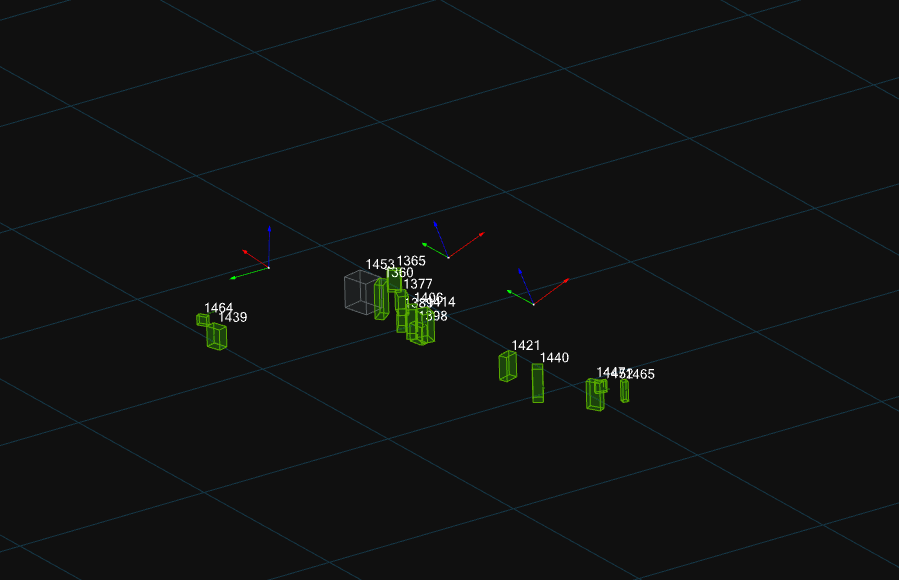Loss Prevention and In-Store Analytics
Loss Prevention and In-Store Analytics
By Gary Angel
|February 15, 2021

At some point in almost every deployment of people-measurement we do, the question of using existing Loss Prevention cameras comes up. And the truth is, it should. It’s frustrating to be installing an IoT camera for measurement right next to an existing LP camera.
After all, almost every store already has a bunch of loss prevention cameras up in the ceiling. So when the idea of adding measurement cameras for people-tracking comes up, it’s natural to think – wait a minute, can’t we just use the cameras already in our ceiling? It’s expensive and time-consuming to add new hardware to a store – not only are people-sensing cameras pricey, but the installation costs almost as much as the hardware.
A few years back the answer to this question was usually a simple no. Existing cameras weren’t digital or their image quality was too poor to use for measurement. But in fact, neither of those things is usually true with modern LP systems.
So, as a matter of fact, you can use existing LP cameras for people-tracking.
But even though you can, it rarely turns out to be the best solution.
The reason that’s true is a combination of coverage, cost and privacy. LP cameras rarely cover the whole store and are almost never matrixed appropriately (in LP scenarios matrixing is just a waste of camera coverage). That means you can use LP cameras to monitor an area but not track a full journey. Cost ought to be all in on LP cameras, but it turns out the story is a lot more complicated. With LP cameras, you have to move video to the cloud and process it there. That’s expensive and it turns out that the costs quickly exceed the cost of IoT based people-tracking. Finally, when you use LP cameras and ship video the cloud, you’re shipping video to the cloud. That raises a host of privacy concerns that don’t exist with edge-IoT cameras where nothing leaves the camera except an X,Y coordinate and a timestamp.
Of these three issues, the biggest downside to using LP cameras as opposed to dedicated people measurement cameras is the most surprising one of all – cost.
Dedicated people-measurement cameras cost between $500 and $1000. And it costs about $1k to install them in your ceiling. On average, our clients spend about $1700-$1800 per camera. That’s a lot of money. If you have an existing LP camera, you save $1800 dollars right off the bat.
But the story isn’t that simple. Most modern LP cameras send video to the provider. The provider allows API access to pipe the data to cloud. But video data is BIG. Moving it to the cloud is clumsy, slow and expensive. And once it’s in the cloud, you have to process it. To give you a sense of the costs, AWS charges ten cents per minute to run people-tracking ML on video. That’s not much, right? But do the math. Ten cents a minute is $6 per hour. In a ten-hour open day, that’s $60 a day. In a month, that means you’ve spent $1800 dollars to process your video. In one month, you’ve paid for the IoT measurement camera AND its installation. And that’s without even factoring in the cost of network and storage for the terabytes of video data you’re moving around.
Even if you’re getting great cloud rates and the cost is a tenth of that, it’s less than a year before measurement cameras have paid for themselves.
The bottom line is that doing video processing on the edge is a LOT more efficient right now. It also happens to be better from a privacy perspective. That doesn’t mean there aren’t scenarios where LP cameras can’t be used – especially for Pilots or for single camera merchandising display projects that required specialized video processing. In that scenario, working with an LP camera is often better.
But for basic store analytics, the economics are as clear as they are surprising. LP cameras are significantly worse than edge-based dedicated measurement cameras.
There is one scenario, however, where it’s possible to effectively dual purpose security cameras and people-tracking. As discussed in this previous post, LiDAR provides some pretty compelling people-tracking capabilities including high accuracy, great coverage and ideal privacy. But LiDAR also has some unique characteristics that make it a favorite for certain kinds of security application. LiDAR isn’t light dependent. It works in any lighting conditions. It works well outdoors. And it works well in cluttered environments.
All of this makes it an ideal candidate for security applications where the main goal is perimeter monitoring and intrusion detection. Now it’s important to understand that because LiDAR doesn’t capture a picture, it’s NOT a good solution for traditional loss-prevention applications. If you’re focused on shoplifting, LiDAR isn’t the solution. But if you’re an airport and you need to monitor the integrity of doors and passageways, or a car dealer that needs to provide night-time security for a large lot, LiDAR is just about perfect.
And here’s the thing, that same LiDAR that provides intrusion detection and perimeter monitoring really can be re-purposed to provide highly-accurate people-tracking. For at least the limited subset of enterprises where perimeter monitoring and intrusion detection are the focus, it really is the holy grail of deploying the best technology for security applications and getting people-tracking essentially for free.
Airports, car dealers, hospitals, and public spaces should all take note. Not only can you do something you might have thought almost impossible – obtain accurate, detailed people-tracking analytics in large or outdoor spaces – by tackling the problem intelligently, you may be able to do it for almost nothing.